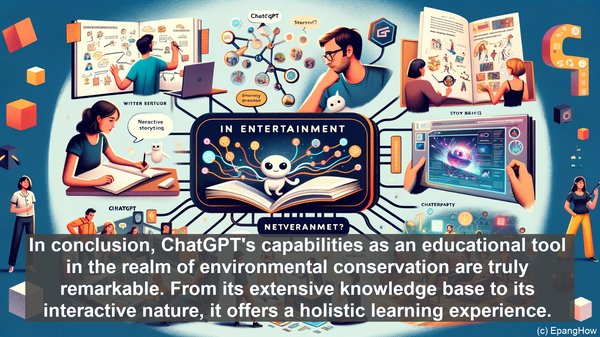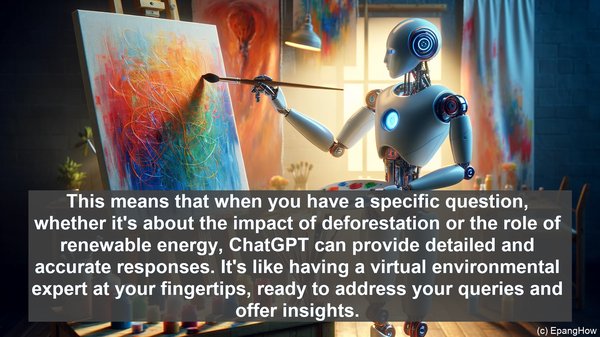Introduction: The Power of ChatGPT in Environmental Education
Welcome to this article on the incredible potential of ChatGPT as a learning resource for environmental conservation. In today’s world, where the need for sustainable practices has never been more urgent, it’s essential for individuals to have access to accurate and up-to-date information. This is where ChatGPT comes in. With its ability to engage in dynamic conversations, it can provide tailored guidance to learners at various stages of their journey. Let’s explore the many ways in which ChatGPT can be a valuable companion in your quest for environmental knowledge.
1. Answering Specific Questions: Tapping into ChatGPT’s Expertise
One of the most remarkable aspects of ChatGPT is its vast knowledge base. It has been trained on a diverse range of texts, including scientific literature and environmental reports. This means that when you have a specific question, whether it’s about the impact of deforestation or the role of renewable energy, ChatGPT can provide detailed and accurate responses. It’s like having a virtual environmental expert at your fingertips, ready to address your queries and offer insights.

2. Exploring Complex Concepts: ChatGPT as a Knowledge Navigator
Environmental conservation is a multidisciplinary field, encompassing aspects of biology, ecology, policy, and more. Understanding the interconnections between these areas can be challenging. Here, ChatGPT’s ability to provide comprehensive overviews becomes invaluable. By breaking down complex concepts into digestible explanations, it acts as a guide, helping you grasp the bigger picture. Whether it’s the concept of ecological footprint or the intricacies of climate modeling, ChatGPT can simplify the learning process.
3. Engaging in Conversations: The Interactive Learning Experience
Learning is not a one-way street. It’s a dynamic process that often involves discussions and exchanges. ChatGPT’s conversational abilities make it an ideal partner for such interactive learning. You can not only ask questions but also engage in dialogues, exploring different perspectives and scenarios. This interactive element adds depth to the learning experience, allowing for a more nuanced understanding of environmental issues and potential solutions.

4. Tailored Learning: Adapting to Individual Needs
Every learner is unique, with their own set of interests and prior knowledge. ChatGPT recognizes this and can adapt accordingly. It can provide resources tailored to your specific needs, whether it’s recommending books, articles, or online courses. This personalized approach ensures that your learning journey is not only informative but also engaging, as it aligns with your individual preferences.
